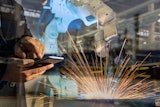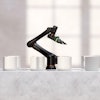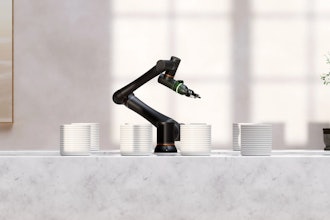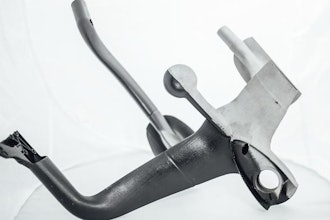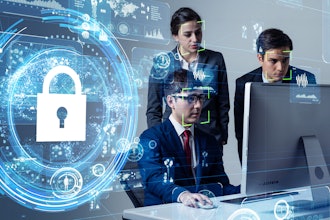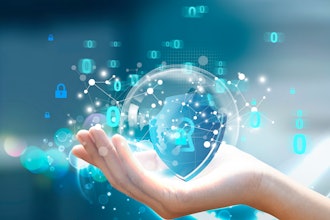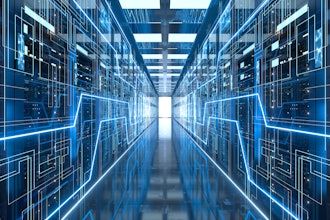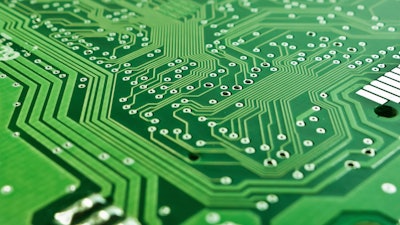
Recently, a collection of global organizations announced a partnership focused on accelerating the commercialization of solutions around the Internet of Things. More than just tech-sharing or establishing standards, these groups want to encourage market-savvy offerings that are not only universally cool or interesting, but actually marketable.
One of the staples of their working dynamic is pushing the “More than Moore” concept. This is in reference to the decree issued by Intel co-founder Gordon E. Moore stating that the number of components per integrated circuit would double every two years. It’s now commonly referred to as Moore’s Law, and has, for the most part, held up since the initial proclamation in 1975.
The three organizations are:
- SITRI, or the Shanghai Industrial Technology Research Institute, which offers funding, IP support, engineering services, market research and manufacturing resources, as well as access to the ever-expanding Chinese marketplace.
- CEA-Leti is a Grenoble, France-based research and technology organization that works to bridge the gap between research and the production of micro- and nanotechnologies. It has an affiliation with …
- MINATEC, which is described as a Grenoble-based innovation campus housing 3,000 researchers and 600 business and tech transfer experts.
Specific areas of focus for the partnership include:
- Microelectromechanical systems (MEMS) and sensors.
- 5G radio-frequency (RF) front ends.
- Ultra-low power computing and communication.
- Radio-frequency silicon-on-insulator (RF-SOI) and fully depleted silicon-on-insulator (FD-SOI) technologies.
Peter Himes, General Manager of SITRI, recently sat down to discuss the goals of the partnership and the future of industrial IoT.
Jeff Reinke, IEN Editorial Director: The commercialization of IoT technologies is any interesting topic. What do you feel has inhibited some of these applications from getting more widespread interest, especially in the industrial sector?
Peter Himes, General Manager of SITRI: We see a lot of interest and activity. IoT though, especially for industrial, means a thousand different applications with new approaches to distributed networks, connectivity, sensing, monitoring and controls. So we are seeing advances not just in sensing and controlling aspects of things, but in connectivity, processing, power, security and analytics.
This is getting into more speculation than hard fact, but manufacturing firms are focused on productivity and efficiencies, and as such have been large adopters of automation technologies for the past 50 years. We believe that IoT will have a significant impact on manufacturing, but will roll out over time. Early adoption will be for infrastructure monitoring (temperature, environment, air quality, security) as IoT solutions allow factories to deploy new sensor-based technologies with little impact to the existing manufacturing line.
As for why the slow adoption, technology is still being worked out in areas of interoperability and data security – all areas we expect to see rapid progress in over the next 2-5 years.
JR: Could you please offer your definition of the phrase "More than Moore", as it relates to the industrial/manufacturing sector?
PH: In technology, especially electronics, the industry has been driven by advances in processing power, memory and communications. All of these have benefitted greatly from Moore’s Law, which has meant a regular cadence of lower costs and higher performance for integrated circuits.
Today, technology is being driven by More than Moore with new devices that are capable of sensing and responding to the environment, and new ways of integrating different technologies that rely on entirely new capabilities that didn’t exist 10-15 years ago.
For manufacturing, this means highly integrated products which provide sensing, connectivity and control in one compact, secure and low-power device. It is the pace of development of these new sensor-based networks that is different, and what “More than Moore” enables.
JR: Where do you see the greatest opportunities for the RF platforms?
PH: Three areas really:
- First, all IoT systems require connectivity and, by and large, this is wireless based. Today there are many competing technologies for connectivity based on environment, data rates, power, distance and security and highly integrated solutions often need to support multiple standards at once. The RF-SOI platform can address this from the analog front end through tunable antenna solutions.
- Second, new sensing approaches are being made available by advances in RF, especially Millimeter-Wave (MMW) radar systems. Part of the work of this partnership is to advance the technology to support these applications.
- Thirdly, even though FD-SOI is primarily supporting the most advanced SOC designs for applications processors and CPUs, the technology has inherent advantages for IoT SOCs on both power and performance optimization, and we look forward to exploring this area more deeply.
JR: Where do you think is the best place to start in generating more momentum around IoT?
PH: What has changed in the semiconductor ecosystem is the loss of very early stage VC (venture capital) and the breadth of resources (fabrication, packaging and design) to reach full commercial production. SITRI was formed to fill this gap, and bring these resources to innovators worldwide. CEA-LETI has long held the same charter, which is why this announcement has resonated so deeply across the industry.
IoT needs higher sensitivity, lower costs, better dynamic range and lower power solutions in applying to a wider range of “things”. The vision of the IoT market is a world of a trillion sensors, and achieving this will require advances in materials, manufacturing, integration and the supply chain to create a more efficient ecosystem from concept to market.
JR: Where do you see MEMS having the greatest impact in relation to the IoT arena?
PH: MEMS is an approach to the manufacturing of mechanical structures and takes advantage of material properties to create sensing, controlling and communicating devices. We see this trend continuing. There is still a lot of innovation, both at the materials level and the device level, based on MEMS approaches.
